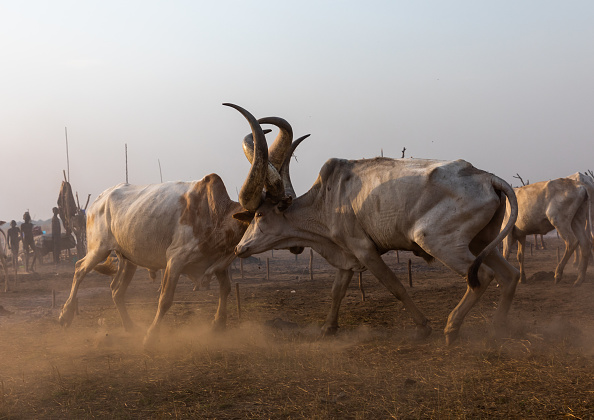
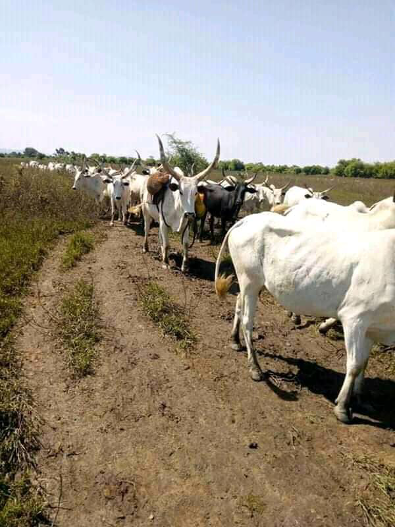
Since livestock were first domesticated ten thousand years ago, humans have relied on different techniques to raise them, from the large ranches found in the American West or Argentina to the long migrations of nomads in the Central Asian steppe. Livestock have played an integral role in defining not just a civilization’s economy, but its cultural identity and historical heritage. Pastoralism is a system of raising livestock in which they are mobile in some form.[1] It is a practice rooted in both ecological necessity and the cultural heritage of nomadic peoples, from the Sami in Sweden to the Bedouins of the Arabian Peninsula.
Pastoralism is an umbrella term that covers diverse cultural practices and modes of livestock mobility, including nomads who are continuously on the move and cover thousands of miles year-round to semi-nomadic herders whose livestock move seasonally or only over short distances. It is an adaptive practice that is necessary in the semi-arid, low rainfall conditions of the Sudano-Sahel, where access to feed and water is often uncertain. Herds are kept in drier areas during the rainy season until resources decrease as the dry season advances, when they are moved to more humid climates. Wide-ranging mobility along known seasonal paths (‘transhumance’) is required to ensure consistent grazing and potable water. As ecology determines when and where livestock can move, migration routes typically traverse national borders and comprise entire geographic sub-regions.
[1] The precise definition of pastoralism has been a matter of debate among some experts but is generally intended to indicate a production system or lifestyle that is based on movement or mobility.
Image shown here: Pastoral cattle travel along transhumance routes in the Sahel.
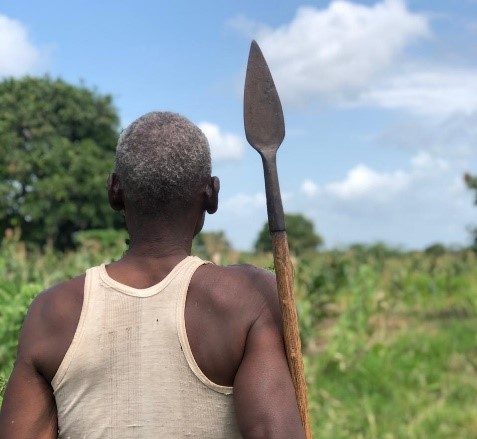
Mobile pastoralists and sedentary farmers tend towards different understandings of their relationship to land. Historically, access to pasture or water was not conditioned on private ownership – livestock would graze in public or communal land and rely on access to shared water sources. Access to public lands would be mediated through local leaders, but these lands were not exclusively owned. Moving to new areas allowed pastoralists to adapt to changing rainfall and avoid overtaxing the resources in a particular area. In contrast, crop production necessitates a longer-term occupation of the land in order to cut, clear, plant, and harvest. Even in areas of light population density, farmers value the ability to retain long-term use of a demarcated and fertile area.
Despite these differences, pastoralist and farming communities are frequently interdependent. Pastoralism has historically helped meet agricultural economies’ demands for animal products (milk, cheese, hides, meat, etc.) through barter or sale of grains and produce. Many farmers would allow livestock to consume post-harvest crop residuals and passing livestock would fertilize arable lands with manure. In turn, pastoralists’ right to access public water or pasture was protected through customary agreements with local host communities. With the same groups using the same routes annually, relationships would develop with sedentary residents.
These relationships were never conflict-free. Farmland would occasionally encroach into designated the pathways or “corridors” where livestock were known to travel, obstructing them from grazing, water, or markets. Passing livestock would routinely stray and into farms and damage crops. In some cases, farmers would retaliate and attack trespassing livestock. Such issues were more than just minor property damage. Subsistence farmers[2] may need to wait a year for damaged crops like cassava to regrow, leaving their family to go hungry. Similarly, the loss of even one cow may be equivalent to the loss of a month’s worth of a middle-class salary. Various customary practices developed across the Sudano-Sahel to establish fair compensation or penalties and prevent these conflicts from escalating into violence. In recent years, however, new environmental, economic, and security pressures have caused relationships between pastoralist groups and sedentary residents to deteriorate.
[2] Subsistence farming is a practice in which most or all crops are used to support a farmer or their family, rather than being sold or traded.
Image shown here: A farmer in Tana river county, Kenya keeps an eye on passing pastoral cattle.

Various ethnic groups across the Sudano-Sahel are often described as “pastoralist,” in the sense that pastoralism is a principle livelihood practice among these groups and plays an influential role in their cultural identity. This can include, but is not limited to, the Tuareg, Moors, and Saharawi in the Saharan regions; the Toubous in Chad, Sudan, Libya, and Niger; the Baggara in the Sudanese regions of Darfur and Kordofan; and the Fulani who are spread from Senegal through Nigeria and the Sahel and into Central Africa. Many of these groups speak their own languages and follow their own traditions that are linked to livestock or nomadic movements and set them apart from their neighbors.
But these groups are not homogenous. The Fulani, for example, are an ethnic population numbering in the tens of millions with hundreds of sub-clans. This includes people who do not practice pastoralism as their primary livelihood but may still consider it to be a part of their cultural heritage or identity. There can be sharp linguistic or social divisions between the members of a pastoralist ethnic group who live a nomadic or semi-nomadic lifestyle and those who live a sedentary life.
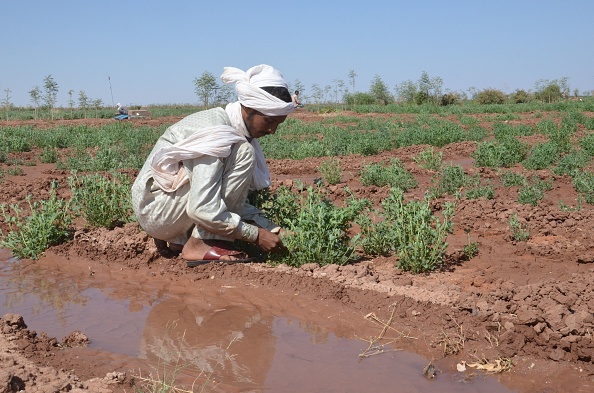
Pastoralism is an umbrella term that describes a wide range of practices and lifestyles. This can include:
- Subsistence herders – Approximately 80% of pastoralists in the Sahel fall below the poverty line, and may only manage small herds.
- Wealthy owners and hired help – Livestock are an lucrative investment for the wealthy, who often rely on hired assistance from nomadic populations to take their livestock on migration.
- Agro-pastoralists – Many pastoralists also practice other livelihoods (farming, fishing, etc) rather than rely on livestock alone.
- Semi-nomadic communities – While some pastoralists are fully nomadic, others will live in settled communities and only leave to take their livestock on seasonal migrations or to go to market.
Image shown here: A young Tuareg herder works on irrigation canal as part of the project conducted in Agadez, Niger.
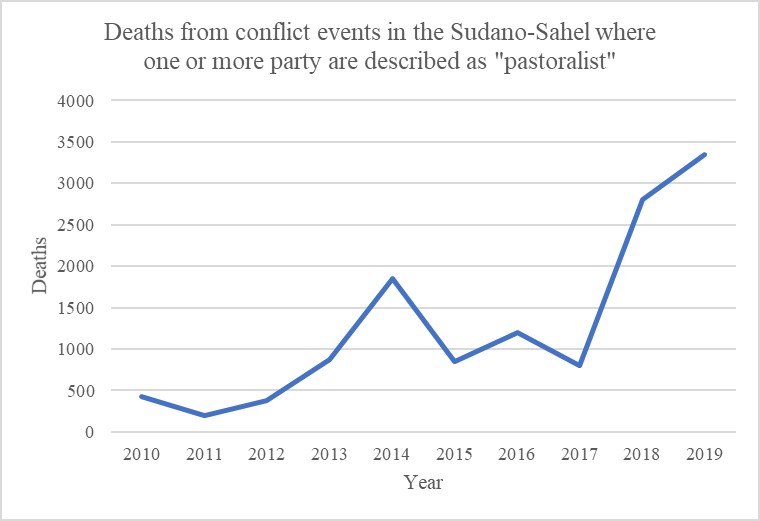
In recent decades, pastoralists and other inhabitants of remote rangelands have faced new threats from increasing statelessness and multiplying insurgencies. We have witnessed outbreaks of violence in unstable regions that overlap with known pastoralists routes: eastern Chad; the border regions of Sudan and South Sudan; the border regions of Kenya, Uganda, and South Sudan; the Central African Republic (CAR) and its borders with the Democratic Republic of the Congo (DRC) and Chad; north and northeastern Nigeria; across the four countries of the Lake Chad Basin; the Liptako-Gourma tri-state zone. Increasing numbers of civilians are losing their lives in conflicts that intersect specifically with pastoralism in the following ways:
-
-
- Everyday confrontations stemming from grievances like damage to crops or livestock;
- The escalation of everyday disputes into vengeance-based, chronic cycles of revenge between pastoralist ethnic groups or between pastoralists and farmers;
- Armed groups or state security forces targeting herder communities and their livestock;
- Pastoralists participating in illicit commercial or non-state armed group (NSAG) vigilante activities, whether because they seek to achieve political goals, safe passage, financial gain, or some combination thereof.
-
Image shown here: The number of deaths from conflict events in the Sudano-Sahel where one or more party are described as “pastoralist”, 2010-2019. Data source: ACLED
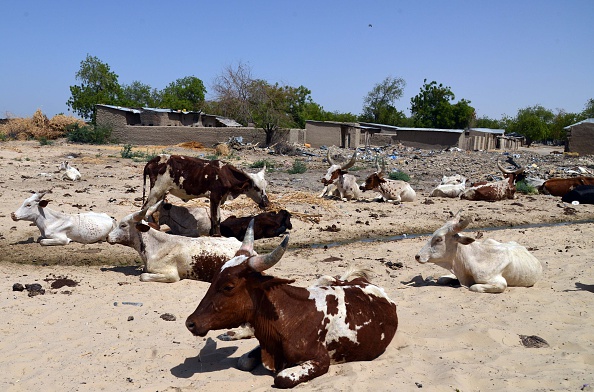
This violence has a direct impact on legal trade, production, and economic growth throughout Sub-Saharan Africa. A 2016 World Bank study noted that livestock partially or fully supports the livelihoods of about 110–120 million people, or roughly 70 percent of the rural drylands population of West and East Africa. As outlined below, the impact of conflict is often easiest to decipher in terms of the formal rural economic growth lost but is also a function of the increase in illicit economic activity, such as smuggling, cattle raiding, or human trafficking.
- A 2015 Mercy Corps analysis suggested that if conflicts in Nigeria’s Middle Belt between pastoralists and farmers were to cease, the benefits attributable to the peace would be $13.7 billion annually, or 2.79% of the nation’s gross domestic product (GDP). The average conflict-affected household would see at least a 64% increase in income.
- A report from the UN Food and Agriculture Organization (FAO) estimated that South Sudan may have experienced a decline between $1.34 and $2.04 billion to its GDP over a two-year period as a direct consequence of the impact of the civil war on the livestock markets.
- A study conducted through the BRACED program of cattle markets in Niger, Mali, and Burkina Faso found that a market’s proximity to violent conflict correlated with a decrease in the local price of cattle.
Pastoralists, many of whom are already struggling with structural poverty, are vulnerable to shocks from extreme weather patterns, civil unrest, wildly fluctuating prices, and outbreaks of zoonotic (animal-based) diseases. In the last decade, conflicts across the Western Sahel have displaced more than 1 million people, a significant share of whom are livestock herders. The international community has responded by providing an annual flow of about $1 billion in humanitarian emergency aid, aid that impacts an average of 5 million people per year.
Image shown here: Cattle abandoned in Malam Fatori, Niger after people have fled to take shelter from Boko Haram. Violent conflict creates risks for pastoralists who have to move through insecure territory. The widespread losses in livestock are a crisis both for pastoralists’ livelihoods and regional food security.
Why has Conflict Increased?
The rapidly expanding scope of pastoralism-related conflict has emerged as the result of a confluence of factors: macro-economic and ecological changes; a crisis in the governance and security of remote rangelands; the increasing prevalence of exclusionary politics. The sections below offer a brief review of these trends, but a more detailed analysis can be found in the complementary report, Pastoralism and Conflict in the Sudano-Sahel: A Review of the Literature.
Image shown here: Long horns cows fighting in a Mundari tribe camp, Central Equatoria, Terekeka, South Sudan.
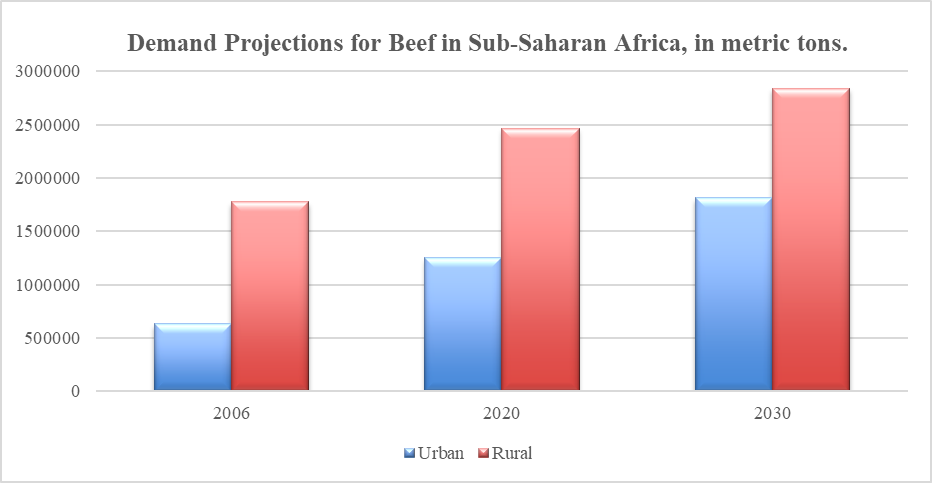
Increases in the number and geographic scope of populations have progressively shifted patterns in livestock production and agriculture, transforming relationships between pastoralists and settled farming communities. Growing urban populations have been driving substantial increases in the demand for meat, outpacing some countries’ abilities to supply. As the demand for beef rises, so too does the number of livestock and herders competing for land and water in the Sudano-Sahel. Some farmers, seeking to capitalize on the economic opportunity of livestock production, have begun raising livestock. The productive interdependence that had bound farmers and pastoralist together erodes when these communities no longer depend on one another for manure, milk, or draught power.
Data source: Prospects for Livestock-Based Livelihoods in Africa’s Drylands. World Bank Studies, ed. Cornelis De Haan, (Washington, DC: World Bank, 2016) citing the source as Robinson, T., and G. Conchedda. 2014. “Livestock Production Systems.” Technical paper prepared for the Economics of Resilience background paper on livestock.

Progressive desertification and erratic rainfall patterns caused by climate change have disrupted the availability of resources – already uncertain in the Sudano-Sahel – displacing communities and placing some pastoralists at risk of losing their livelihood. Periods of drought followed by heavy rainfall in the 1970s and 1980s led to agricultural intensification and expansion into new geographic areas, including those that historically served as grazing areas or corridors for livestock migration. This map illustrates the variation in the average rainfall in the Sahel over the last century. The southward movement of rainfall illustrates one key challenge for pastoralists – cattle from the Sahel will have to move further south to access water resources, where they have to navigate borders with coastal countries.
One consequence of these environmental and economic shifts has been the corrosion of productive interdependence between farmers and pastoralists. Some pastoralists have settled down and adopted small-scale farming or commerce even as some farmers have begun raising livestock. With the increase in the number of farmers raising livestock and the advent of artificial fertilizers, fewer farmers now depend on passing livestock to fertilize their fields. Younger generations of farmers may see passing pastoral livestock as pests that destroy their fields instead of a productive complement to their livelihood.
Other factors have reduced the availability of common use land for grazing or planting. Land may be allocated to private companies for commercial agriculture use, especially land along waterways that are often essential for pastoralists during the dry season. Political elites, responding to the increasing demand for animal products, are investing in commercial livestock production, leading in some cases to the privatization of land that pastoralists could previously access through customary rights. Access to certain land may be prohibited under new conservation decrees that seek to protect microclimates and rare species.
All these factors have resulted in intense competition over land access and use in ways that existing state institutions and traditional dispute resolution mechanisms are ill-equipped to address.
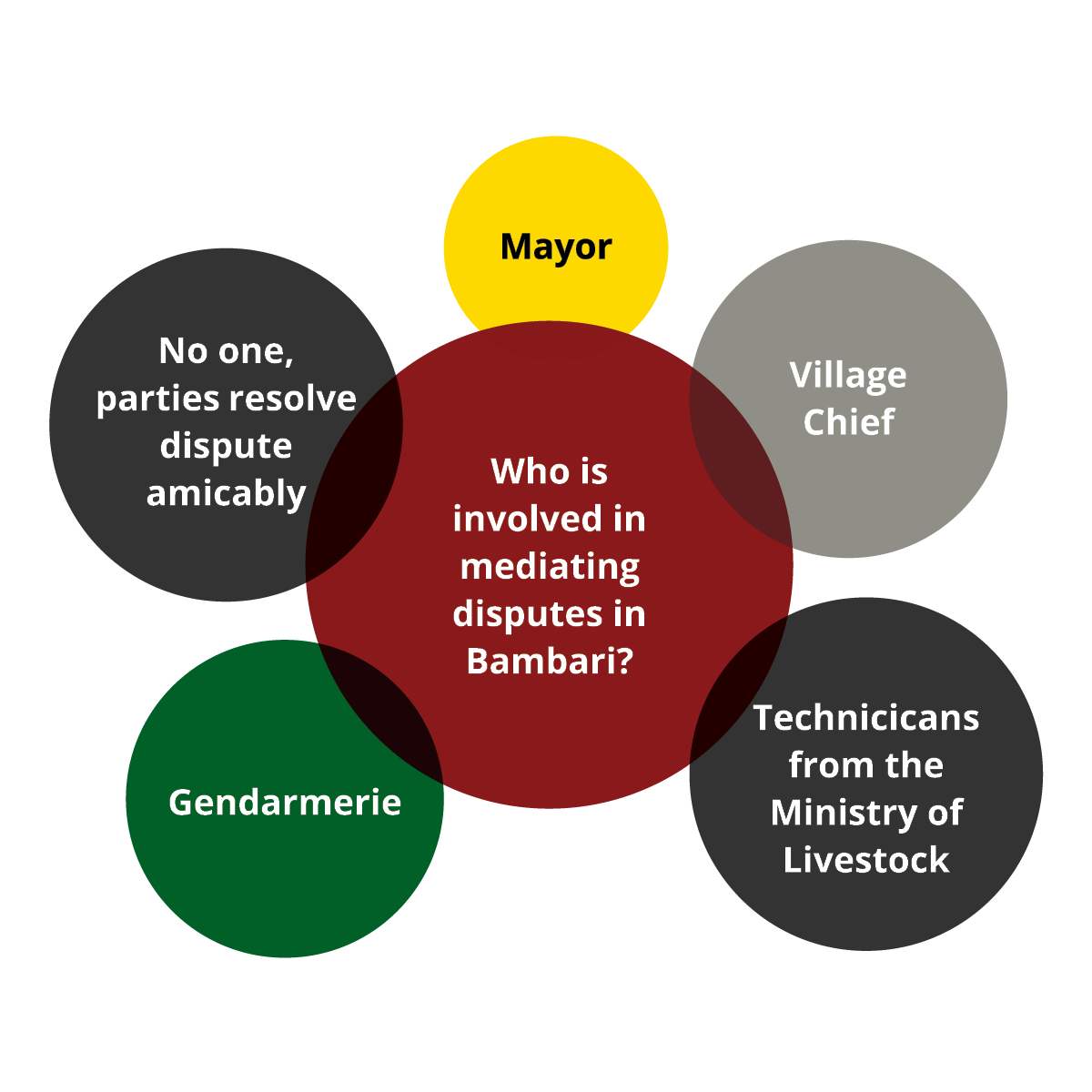
State authorities in most parts of the Sudano-Sahel exercise limited control over rural territories. Policies governing resource management, land ownership, or livestock movement exist on paper but are often not properly implemented. Many pastoral and farming communities continue to turn to traditional leaders or customary courts to negotiate access to resources or adjudicate disputes. The end result is a pluralistic system whereby various authorities (traditional chiefs, town councils, mayors, customary courts, agricultural ministries, law enforcement agencies) all exercise authority but rely on different rules or practices to resolve conflict. The governing authority of both the state and customary leaders in active conflict zones has been further undermined by the presence of NSAGs.
In areas where state authorities do exercise control, their policies often privilege settled populations. Both before and after the independence period, policymakers and development experts across the Sudano-Sahel have often seen pastoralism as irreconcilable with a modern commercial agriculture and livestock sector. Many states instituted reforms that contravened the customary practices that pastoralists and farmers had relied on to negotiate the use of shared territory. While access to water and public land in rural areas was historically mediated by traditional leaders, many states passed legislation that allowed them to assume more direct control over these resources. New land tenure laws supported the private sale and commercial development of rangelands, changing the rules for pastoralists who could at one time negotiate land use through their relationships with local leaders.
Under a modern state system, pastoralists cannot practice their livelihood without some measure of official recognition and protection; they depend on the ability to move across borders and to access resources in land overseen by state authorities. Over time, more and more officials and livestock experts have acknowledged that any future vision for Africa’s rural development needs to explicitly support pastoralism. Various multilateral declarations – such as those passed in Nouakchott and N’Djamena – have called for collective action to support pastoral livelihoods, and various national governments have implemented legal and development reforms to incorporate pastoralism into a modern governance system. This includes everything from multilateral agreements that guarantee free passage of livestock across borders, to investments in public water infrastructure along transhumance corridors.
Image shown here: The potential avenues for mediating farmer-herder conflicts, according to focus group discussion with pastoralists in Bambari, Central African Republic, April 2020.
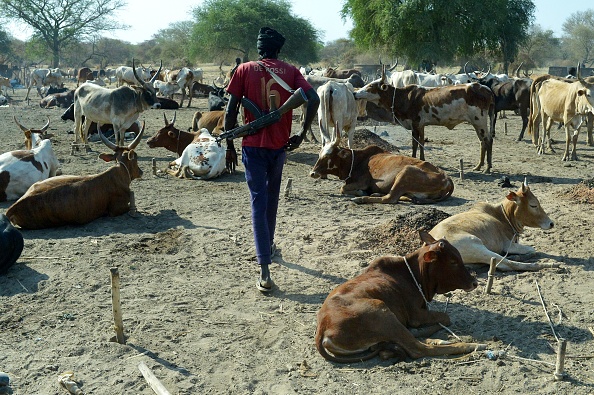
Pastoralists have been affected by the various shocks to stability felt across the Sudano-Sahel – non-state armed groups, civil war, transnational crime. These shocks fuel a vicious cycle, where both pastoralists and settled communities are pressured to take up arms or illicit activities to protect or provide for themselves, in turn driving more instability. The average pastoralist in Mali or CAR, who may have only their own gun and a makeshift fence of branches to guard their herd, are attractive targets for banditry and exploitation of armed groups. Even subsistence herders may be responsible for cattle that are each worth more than half of a years’ wages for someone living at the poverty line. Cattle theft or protection taxes are an increasingly common practice and a lucrative source of income for insurgent groups. Cattle raids between rival pastoralist groups – a longstanding practice in some regions – have become more professionalized as livestock are targeted by local militias, as in conflicts in Sudan and South Sudan.
These threats are often not effectively addressed by state security forces who lack the resources or capacity to work with communities and find solutions. To protect themselves and their livelihood, pastoralists take ownership over their own safety in ways that make them appear like a threat to host communities – arming themselves, hiring armed guards, or organizing self-protection militias. This is one small element of a much larger increase in the proliferation of small arms across the Sudano-Sahel. In some cases, pastoralists will even join or form alliances with local insurgent groups to avoid being targeted. Despite the large numbers of people who practice pastoralism, pastoralist communities are still frequently stigmatized as violent outsiders. Policymakers, media outlets, and security forces frequently treat pastoralists as proxies for insurgent groups and as suspicious “foreigners.”
Although many are victims of exploitation themselves, some pastoralists and members of traditionally-pastoralist ethnic groups participate in criminal or insurgent activity. Their motives can include any combination of profit, politics, or self-protection. As experts in navigating open rangelands, avoiding authorities, and crossing borders undetected, pastoralists can be an asset for smuggling operations. As the vast majority of pastoralists live below the poverty line, the economic opportunity that comes from these illicit activities can be a powerful incentive. Various insurgent and militia groups – from the Katiba Maacina in central Mali, to the Islamic State in the Greater Sahara in the Liptako Gourma region, to the Unité pour la paix en Centrafrique (UPC) in the CAR – make appeals specifically to pastoralists or pastoralist ethnic groups. Many such ethno-nationalist movements or vigilante groups are organized around an ethnic or tribal identity of which a pastoralist livelihood is an essential component. Resource conflicts between pastoralists and farmers are often intertwined with other forms of intercommunal violence between those groups that are traditionally pastoralists or farmers.
Image shown here: A man with a rifle walks among cattle in Udier, South Sudan. Pastoralists often carry small arms to protect herds, who are lucrative targets for bandits.
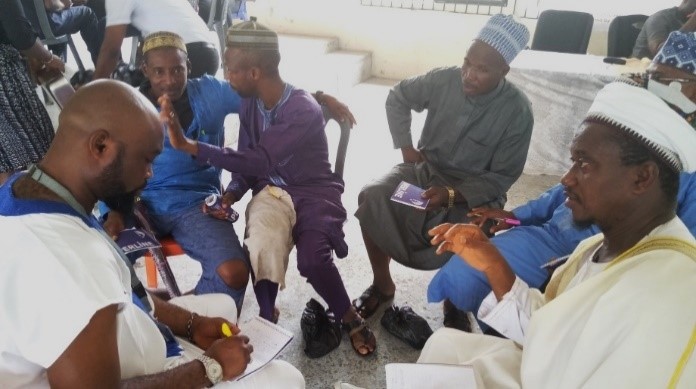
Despite the escalation of violence, there are promising opportunities to create a peaceful future for pastoralism. In Nigeria, pastoralist and farming groups who have been caught up in horrific cycles of vigilante violence have come together to discuss grievances that divide them. Across the Sudan-South Sudan border, community leaders are restoring pastoral migration practices that had been disrupted by years of political conflict and militia violence. Western Sahelian states have passed national legislation that nominally protect pastoral access to resources and increase the authority of local governance systems, which may help restore the ability of community leaders to manage conflicts effectively.
This toolkit offers guidance for funding agencies, diplomatic staff, and practitioners for how they can support these kinds of interventions. Return to the Homepage to start exploring the different modules.
Image shown here: Herders and cattle owners during dialogue in Ughelli, Nigeria. All across the Sudano-Sahel people are finding collaborative solutions to pastoralism-related conflict.